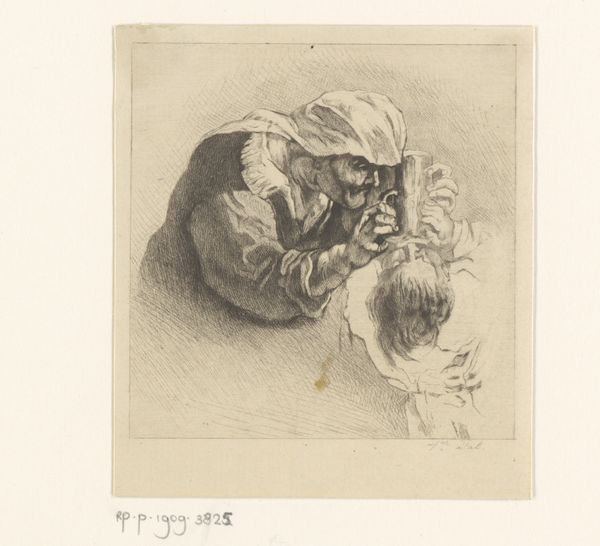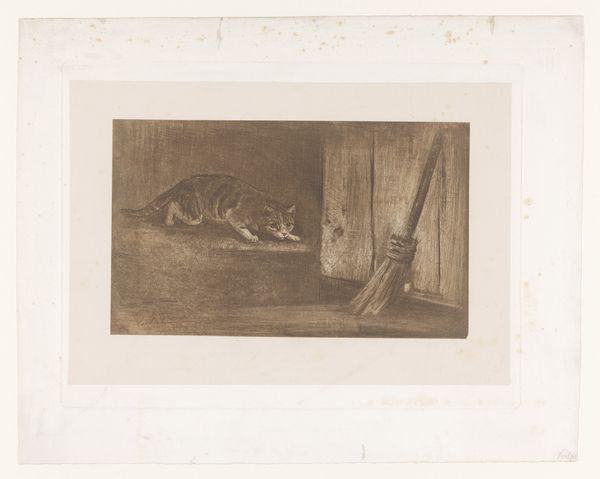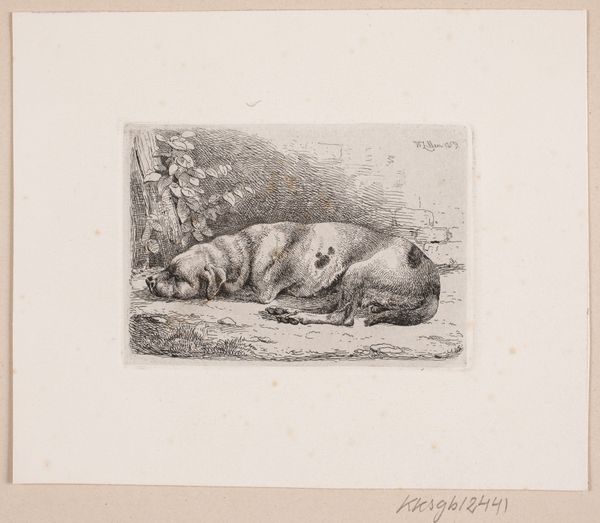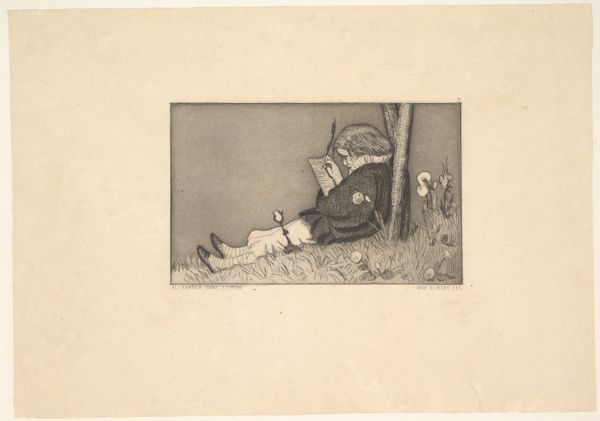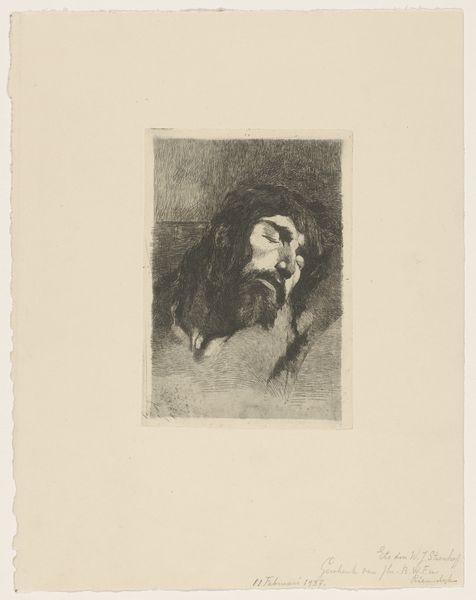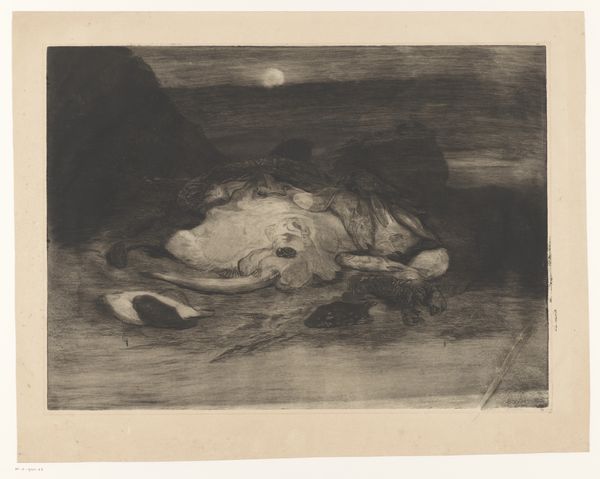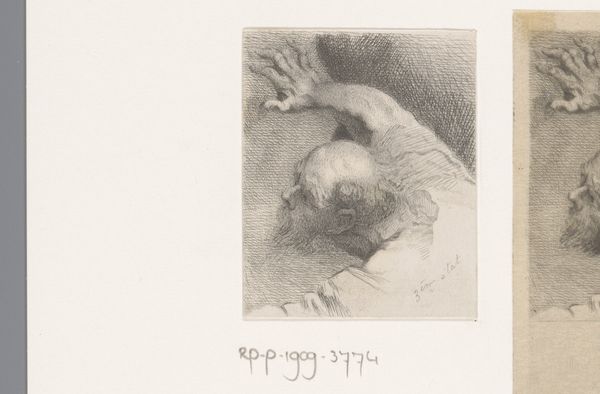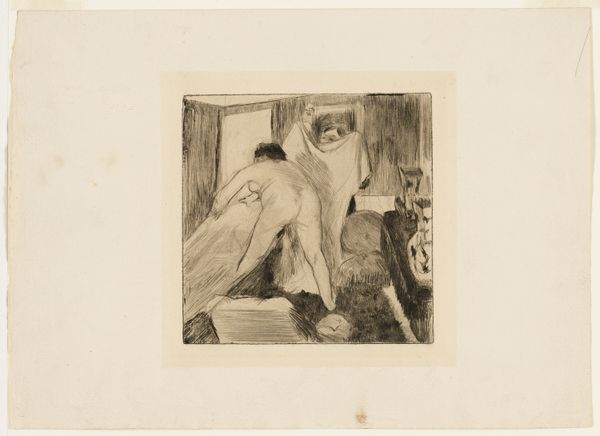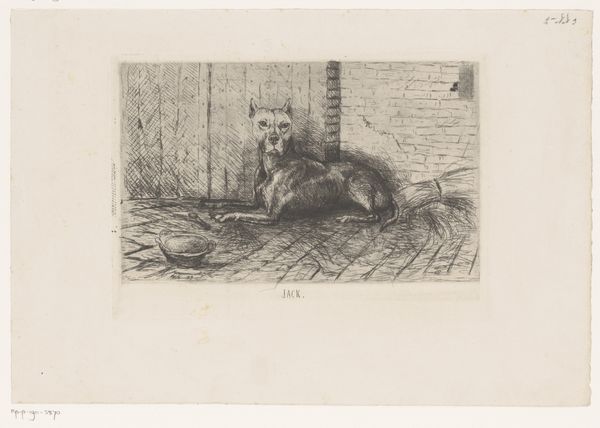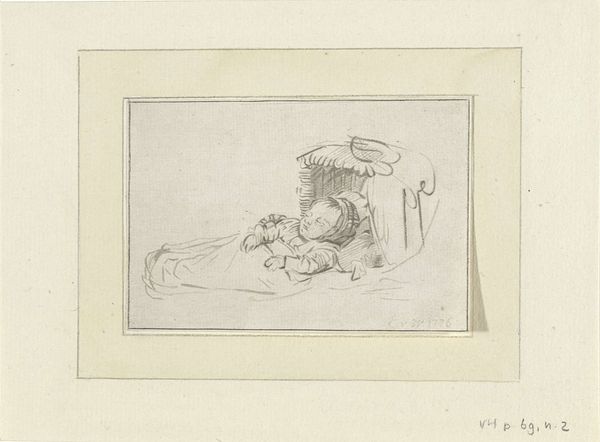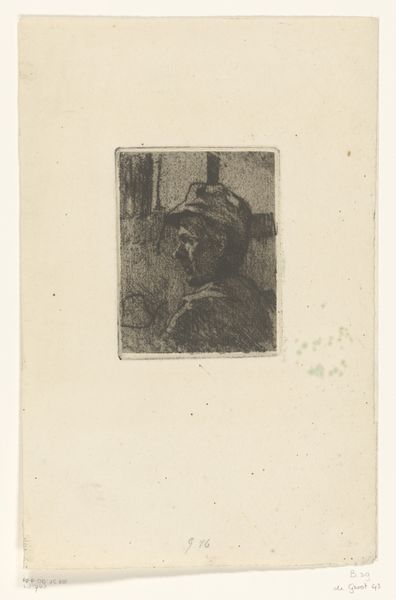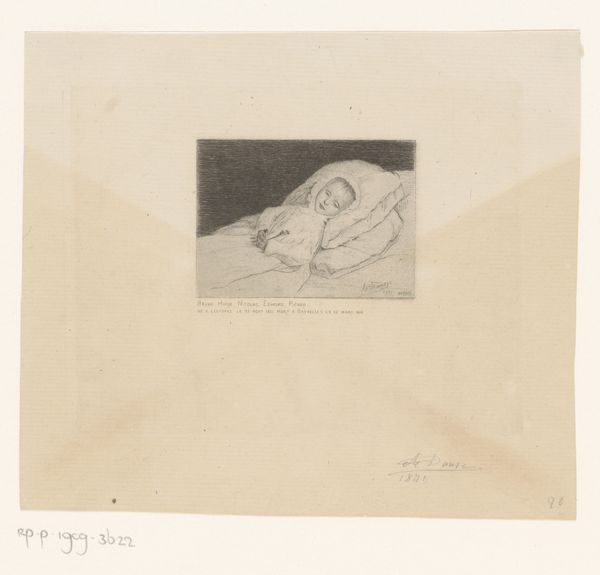
drawing, pencil, charcoal
#
portrait
#
pencil drawn
#
drawing
#
pencil sketch
#
charcoal drawing
#
pencil drawing
#
romanticism
#
pencil
#
horse
#
charcoal
#
history-painting
Dimensions: height 125 mm, width 163 mm
Copyright: Rijks Museum: Open Domain
Curator: This arresting work before us is titled "Dode huzaar," or "Dead Hussar," rendered in 1844 by Adolph Menzel. Menzel was known for his intense social realism, often capturing the raw underbelly of Prussian life. This is a drawing done with pencil and charcoal. Editor: It's stark, isn’t it? Immediately, you feel the weight of death. The texture—the grainy quality achieved through the charcoal and pencil—gives the scene an unsettling reality. The dark shading certainly emphasizes the grimness. Curator: Absolutely. Menzel often depicted scenes of conflict and hardship. It's thought he had a complicated relationship with Prussian militarism. Art historically, this piece serves as an intimate portrayal, resisting the glorification of war common at the time. Editor: Intimate, yes, but also very concerned with process. Look at the lines – you can practically see Menzel wrestling with the materials. He wasn't just representing a dead soldier, he was exploring how pencil and charcoal could evoke flesh, cloth, even the dirt. What labor was involved, you wonder? Curator: He's confronting a darker reality in a very material way. It certainly asks us to consider who these men were beyond their uniforms. But it's also about Prussia's broader societal investment in militarism. Editor: Investment—financially and emotionally. Consider how readily available these materials were, this paper, the pencils. All tools, really, used in this process to illustrate and shape societal concepts of sacrifice and death. This piece also makes one wonder about art and consumption, or Menzel’s possible patrons, for that matter. Curator: His critical eye allows the public a chance to grapple with those concepts too. It certainly deviates from more romanticized military depictions that were prevalent. It is as much social critique as portrait. Editor: Precisely. It also draws my eye in to observe his craft. To me, the "Dead Hussar" challenges us to confront both the realities of conflict and to see labor inherent to art making that contributes to what we consume visually. Curator: It encourages thoughtful examination about art’s position during conflicts and their cost on society. Editor: A truly grim reminder conveyed with accessible media to engage its public, then and now.
Comments
No comments
Be the first to comment and join the conversation on the ultimate creative platform.

